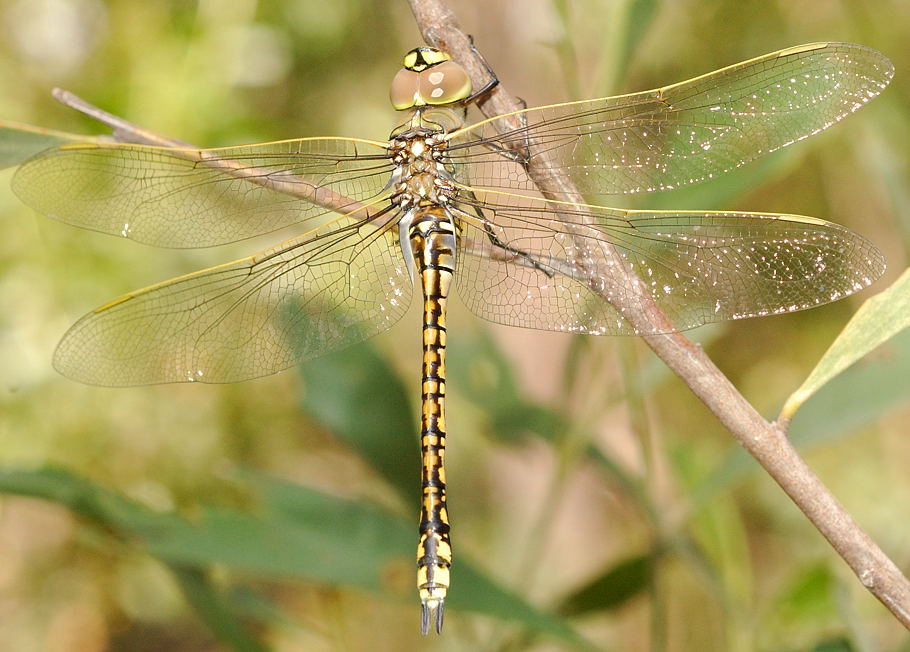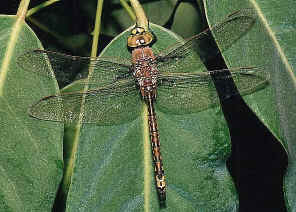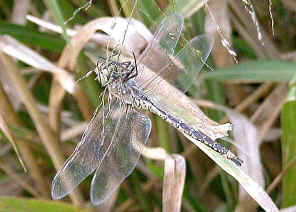Australian Emperor Dragonfly - Hemianax papuensis
FAMILY AESHNIDAE
This page contains information and pictures about Yellow Emperor Dragonflies that we found in the Brisbane area, Queensland, Australia. They are also known as Yellow Emperors. In New Zealand they are known as Baron Dragonflies.

- Male, body length 65mm
This dragonfly is a very large dragonfly. They never stop flying over the pond. They are common in Brisbane.
During a sunny summer day, you will see the dragonfly flying over every piece of large flash waters in Brisbane. It is usually the largest dragonfly on the water and will chase away any flying object on its path. The dragonfly is pale yellow in colour with grey pattern on the body. The costa, or the front edges of its wings are pale yellow.



- The Australian Emperor Dragonfly spend most of the time flying, defending its territory and hunting for prey, seldom rest on a sunny day. In flight it appear yellowish. At the end of its abdomen there is the yellow spot as the 'tail light'. The males aggressively defend large territories over the water.. Its territory can be as large as 50 meters on a section of slow running water. If there is the intruder, it will always be driven away by a series of noisy air battles. The dragonfly usually has its patrol flight one meter about the water in quite a routine path within its territory.
-



- The pictures above show the dragonfly rested on grasses and trees during late afternoon. The dragonfly rested there overnight until next morning.



- The first picture above shows the Australian Emperor pair laying eggs in the plant under the water, still in tandem position. Sometimes we saw the female dragonfly laying eggs alone. The female resembles male. The breeding sites are ponds and slow running water with thick vegetations. More information about reproduction please visit this page.
- The moulting skin left after the larva climbed up from the water and emerged as an adult dragonfly, length 40mm

- The Australian Emperor Dragonfly has two pair of wings which are about equal size. They are clean in colour. The construction is typical example of dragonfly's and damselfly's wings. There are only five main vein stems. The black pterostigma is carried near the wing tip. The main veins and the crossveins form the wing venation pattern. The venation patterns are different in different species. The venation pattern is useful for species identification.
- Reference:
- 1. The Australian Dragonflies - CSIRO, Watson, Theisinger & Abbey,1991, p190.
- 2. A Field Guide to Dragonflies of South East Queensland - Ric Nattrass, 2006, p50.
- 3. The Complete Field Guide to Dragonflies of Australia - CSIRO, GŁnther Theischinger and John Hawking, 2006, p152.
- 4. Hemianax papuensis - Australian Emperor - Deniss Reeves, Austrolestes-Newsletter of Australian Dragonfly Society, #8, 2003.



